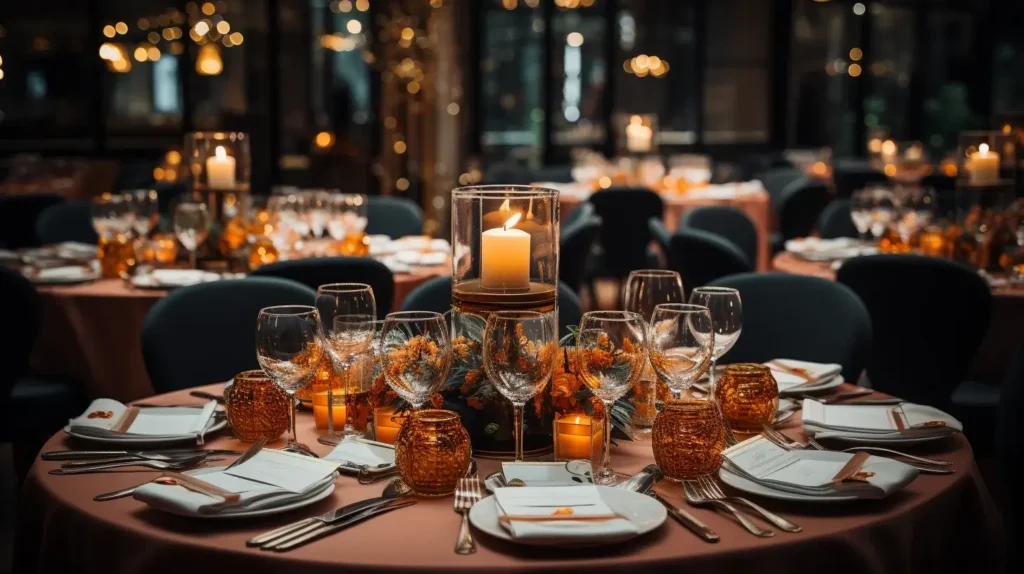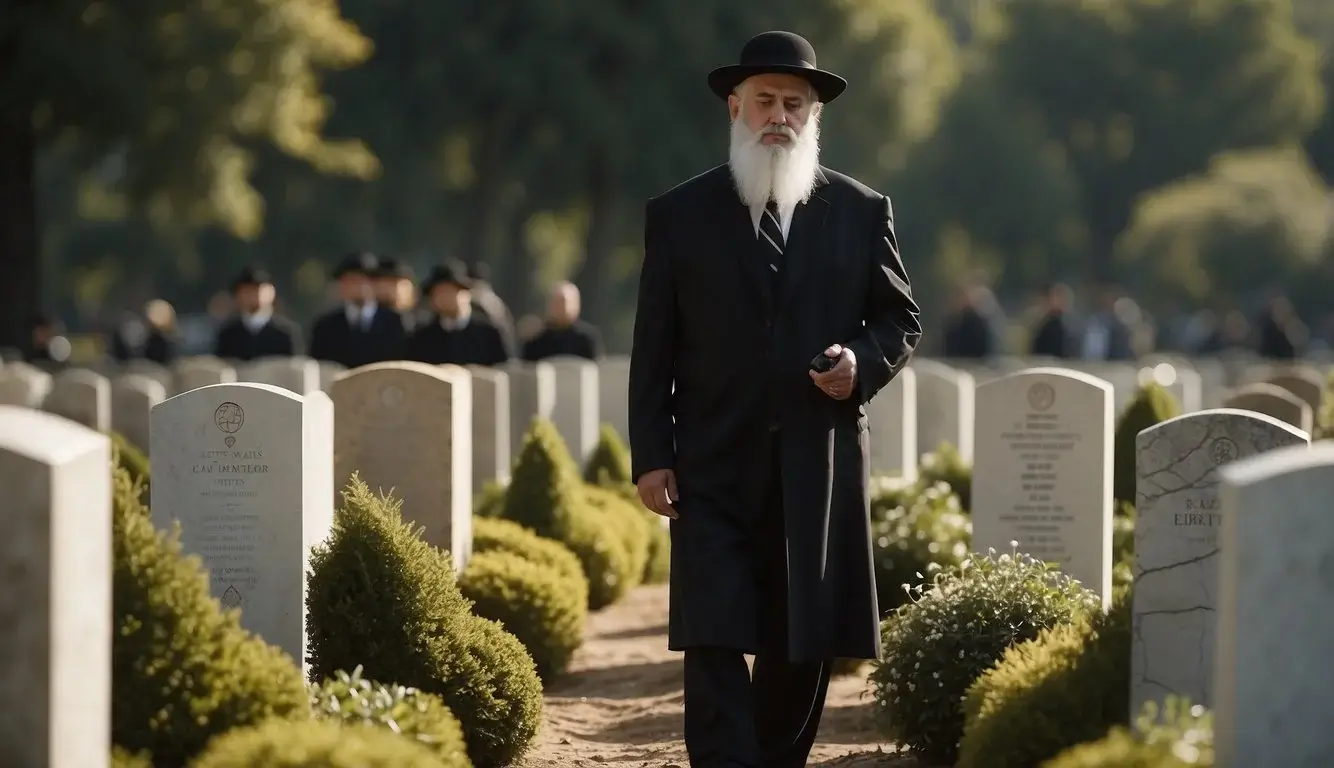As someone who specializes in organizing networking events, my skill set revolves around creating dynamic environments where every encounter is an opportunity for growth and collaboration. My goal is to transform typical meetings into powerful hubs for networking.
In this guide, you’ll discover how meticulous planning can elevate an event from a mere meeting to a catalyst for connections, careers, and collaborations.
Key Takeaways
- Effective networking event planning is pivotal for professional development and industry connections.
- The event’s success hinges on meticulous logistics and an engaging structure that encourages interaction.
- Post-event follow-ups are essential to nurture the relationships initiated during the event.
Setting the Stage: Event Purpose and Goals

When we dive into networking event planning, it’s essential to clarify why we’re hosting the event and what we hope to achieve. This focus sets us up for success and ensures that every activity aligns with our objectives.
Determining the Event’s Objective
Key Objective:
- Define the main purpose of your networking event.
Before we send out a single invitation, we need to articulate the event’s core objective. Is it to foster connections within a specific industry, introduce job seekers to potential employers, or spark innovative collaboration among business leaders? By pinpointing our event’s purpose, we can shape every element—from theme to content—to cater specifically to these goals.
Identifying Your Target Audience
Demographics & Industry:
- Align the audience with the event’s purpose.
Understanding who our attendees will be is as vital as knowing our event’s purpose. Are we targeting young professionals, seasoned industry veterans, or a mix of both? By clearly identifying our demographic, we can develop tailored content, pick appropriate speakers, and even formulate the right questions for networking activities. This strategic planning fosters meaningful interactions that resonate with participants and supports our networking event’s goals.
Event Logistics

When we embark on networking event planning, we understand that coordinating the logistics is a critical step for ensuring the event’s success. Venue selection, scheduling, budget management, and working with partners meld together to create an event that resonates with both attendees and organizers.
Choosing the Right Venue
Our choice of venue is integral to the event’s atmosphere and functionality. We prioritize accessibility for all participants, ensuring they have the necessary amenities. Here are two venues reflecting our commitment to diversity and inclusivity:
- Community Halls: Ideal for local gatherings, providing ample space and a familiar environment.
- Unique Venues like Museums and Art Galleries: These offer a stimulating backdrop that encourages networking and sparks conversations.
Scheduling the Event
We dial in on the time and date to maximize attendance. Midweek events often see higher attendance as weekends can be reserved for personal time. We ensure that our scheduling:
- Avoids clashing with other industry events.
- Considers the typical calendar of our target audience.
Budgeting and Financing
Our budget defines the scale and options for the networking event. It encompasses:
- Venue hire.
- Catering, entertainment, and refreshments.
- Marketing activities. We always keep an eye out for opportunities like outside sponsorship or partners willing to offer reduced rates to stretch our resources further.
Working with Vendors and Partners
Collaborating with vendors and sponsors ensures we offer a top-tier experience. We carefully select and onboard partners that align with our event’s objectives and values. This includes:
- Catering companies that can provide quality food and drink options.
- Entertainment vendors that cater to our specific audience demographics. Networking event planning is an intricate dance of details, and we take every step to choreograph an experience that’s memorable and seamlessly executed.
Event Structure and Format

When we plan networking events, the structure and format are crucial in sparking meaningful conversations and making the event memorable. Let’s dive into how to choose a format that engages and how to create an agenda that facilitates effective networking.
Choosing an Engaging Format
Speed networking: This format is similar to speed dating, where participants have brief conversations with several people one-on-one. We can set a timer for a few minutes per interaction, ensuring that everyone can meet multiple attendees.
Icebreaker sessions: Starting our event with an icebreaker session can warm up the crowd and encourage more open exchanges later on. This could include fun questions, interactive games, or prompts designed to get people talking.
Creating an Effective Agenda
Keynote and Sessions: A well-crafted keynote presentation can set the mood for the event, and subsequent sessions can dive deeper into specific topics of interest. Ensure that these sessions align with the event’s overall theme.
Breaks and Conversations: In our agenda, allocating time for breaks is essential. These allow for informal conversations and can be when the best networking happens. It’s when we swap business cards and plan follow-up meetings.
Marketing and Promotion

In the context of current trends in the event planning industry, effectively marketing and promoting your networking event is crucial for its success. This goes beyond simply generating buzz; it’s about strategically connecting with the right audience using the right message to guarantee that the event attracts significant attendees and remains engaging.
Leveraging Social Media
Using social media is invaluable in promoting our networking event. Platforms like Facebook allow us to create event pages that can be shared across our network. We can utilize LinkedIn groups related to our industry to target professionals interested in our event. Crafting posts that highlight the benefits of attending and spark conversations are ways to maintain engagement and interest.
- Post frequency: Aim for a mix of daily updates and weekly in-depth posts.
- Types of content: Use a variety of content, such as behind-the-scenes prep or speaker highlights, to keep the feed fresh and exciting.
Creating LinkedIn events and using targeted LinkedIn messaging can also help us connect directly with our desired audience. By crafting personalized messages to our contacts, we’re more likely to pique their interest and secure their attendance.
Developing Effective Invitations
Our invitations need to stand out in a busy inbox. An effective invitation strategy involves a compelling subject line, a clear message, and a call to action that resonates with our guest list.
- Email design: Use bold headings, bullet points, and a clear call to action to make the invitation visually appealing and easy to understand.
- Personalization: Addressing recipients by name and referencing any past interactions can increase the chances of a positive response.
Email is an essential tool for sending out invitations, complemented by personalized follow-ups that make each potential guest feel valued. Keeping our guest list organized is crucial—we want to ensure we follow up with the right contacts at the right time.
Registration and Guest Management

When we plan networking events, ensuring a seamless registration process and addressing the diverse needs of attendees are at the forefront of creating a positive experience. Let’s explore how to manage attendee registration and effectively cater to guest needs.
Managing Attendee Registration
Attendee Registration is a crucial first step in an event’s journey. To facilitate this, we implement a robust system that smoothly handles registrations and ticket allocations.
- Online Registration Platform: Allows attendees to register at their convenience and provides us with valuable data for event planning.
- Ticketing Options: We offer a range of tickets, such as early bird and VIP, to cater to different preferences and budgets.
- Accessible Registration: Ensuring our registration website is accessible for people with disabilities is a priority for us.
By prioritizing these elements, registration becomes a hassle-free experience for the attendees.
Catering to Guest Needs
Understanding and catering to our guest’s needs is essential to deliver a comfortable and engaging event experience.
- Comfort: Adequate seating, temperature control, and a variety of food options ensure guests are comfortable throughout the event.
- Special Requirements: We respect and accommodate any dietary restrictions or accessibility needs our guests may have to ensure a seamless experience.
- Onsite Assistance: Our team is always available to assist with any questions or needs that may arise during the event.
By staying attuned to these aspects of guest management, we create an inclusive and welcoming atmosphere for all participants.
Networking and Relationship Building

When we plan networking events, relationship-building is our top priority. It’s crucial for us to create an environment that sparks initial connections and fosters long-term collaborations.
Facilitating Connections
At the heart of Networking Event Planning is the drive to facilitate meaningful connections among attendees. We adopt a range of strategies to initiate this process, including face-to-face networking and speed networking activities. For face-to-face interactions, it’s all about setting the right scene:
- Seating Arrangements: Circular tables to encourage group conversations.
- Name Tags: Clearly visible, to avoid the awkward ‘name-forgetting’ scenario.
We also leverage virtual networking events to reach a wider audience. To make these online formats effective:
- Breakout Rooms: For smaller, focused discussions.
- Interactive Tools: Polls and Q&A sessions to keep engagement high.
Encouraging Ongoing Interaction
After the initial handshake or virtual wave, our approach to nurturing ongoing interaction takes centre stage:
- Follow-Up: We guide our guests on the art of a good follow-up email, personalized and concise.
- LinkedIn: Encourage the use of LinkedIn for professional connections, suggesting LinkedIn groups related to the event’s theme for sustaining the dialogue.
Email exchanges post-event are critical for transforming fleeting contacts into lasting professional relationships. Additionally, collaboratively using platforms such as LinkedIn maintains and strengthens these budding relationships. We, as event organizers, constantly capitalize on this tool to facilitate post-event networking continuity.
Enhancing Event Experiences

When we focus on networking event planning, we recognize the importance of creating events that leave a lasting and memorable impression. It’s about crafting an event experience that’s both fun and conducive to making meaningful connections.
Incorporating Entertainment and Refreshments
Entertainment plays a crucial role in setting the atmosphere. Imagine guests clinking glasses, laughter ringing through the air, and a vibe that makes every attendee feel at ease. We take pride in selecting:
- Live music bands or DJs that understand the crowd
- Stand-up comedians or magicians for a bit of laughter and amazement
As for refreshments, they are not just a necessity; they’re an experience:
- A diverse array of gourmet snacks and finger foods that cater to all dietary needs
- A selection of beverages, both alcoholic and non-alcoholic, ensuring everyone has a drink in hand to toast new connections
Adding Unique Activities
To elevate the event further, we incorporate unique activities that encourage interaction unconventionally and engagingly:
- Cooking Class: Unleash the inner chefs in your attendees as they bond over recipes and roux.
- Hike: Take advantage of the great outdoors with a group hike, facilitating conversations amidst nature.
- Masterclass: Spark inspiration by learning from experts, from mixology to coding, turning the event into a hive of shared learning.
These activities not only add an extra layer of fun but also help create an event experience that goes beyond the ordinary, fostering both personal growth and professional networking.
Post-Event Follow-Up

In our networking event planning, we understand that the real magic often happens after the event. Effective follow-up is critical to seizing opportunities and gathering feedback to refine future events.
Gathering Feedback for Improvement
After a networking event, we prioritize feedback to enhance our approach. We send out a survey with specific questions designed to garner honest evaluations:
- What did you enjoy about the event?
- What areas could use improvement?
- How relevant were the networking opportunities?
This feedback is not just insightful—it’s actionable, allowing us to tailor our next networking events to better meet our attendees’ expectations and foster a more fruitful environment.
Extending Professional Opportunities
Our follow-up isn’t just about improvement—it’s also about cultivating connections and exploring potential opportunities. Here’s how we do it:
- Personalized follow-up emails to each attendee to remind them of their interaction with us.
- An invitation to connect on professional platforms, such as LinkedIn.
- Providing resources or introductions that can open doors for potential clients and generate leads.
Each of these steps is designed to keep the conversation going, turning one-time connections into lasting professional relationships and laying the groundwork for future events.
FAQs for Networking Event Planning
What are some effective icebreaker activities for networking events?
Effective icebreaker activities are key to warming up the atmosphere and encouraging interaction. Some popular options include:
- Speed Networking: Similar to speed dating, this involves quick, brief interactions between attendees, allowing them to meet multiple people in a short time.
- Two Truths and a Lie: A fun game where each person shares two true facts and one false fact about themselves, with others guessing which is the lie.
- Networking Bingo: A bingo card with various professional or personal achievements. Attendees must find others who match the criteria on their card.
These activities can quickly break the ice and foster a comfortable environment for more in-depth conversations.
How can I encourage attendees to keep networking after the event?
To encourage ongoing networking, consider the following strategies:
- Create Online Communities: Establish a group on platforms like LinkedIn or Facebook for attendees to join, share resources, and stay connected.
- Follow-up Communications: Send regular newsletters or updates, highlighting upcoming events or sharing interesting articles and resources.
- Host Regular Events: Organize periodic events or meet-ups to maintain the momentum and provide continual networking opportunities.
These strategies can help maintain the connections formed during the event and facilitate the growth of a vibrant professional community.
What are the key metrics to evaluate the success of a networking event?
Evaluating the success of a networking event involves looking at various metrics:
- Attendance Rates: Compare the number of registrants to actual attendees to gauge interest and commitment.
- Feedback Surveys: Collect attendee feedback on various aspects of the event, such as venue, content, and overall experience.
- Engagement Levels: Assess the participation in activities and interactions during the event.
- Follow-up Engagement: Monitor the activity in post-event online communities and the number of connections attendees report making.
These metrics can provide valuable insights into the event’s impact and areas for improvement in future events.
If you enjoyed reading about Networking Event Planning, check out our other articles:
- Event Planning 101: Mastering the Basics for Memorable Events 2024
- Mastering Local Event Promotion 2024: For Maximum Attendance and Engagement
- Event Trends 2024: Unique Trends Shaping the Future
- Event Planning Basics 2024: 11 Steps For Your Next Big Event
- 20 Latest Trends in Event Planning 2024: Navigating the New Normal
Feel free to also check out our other Articles from the category “Business Events“ and don’t forget to follow us on Pinterest.












